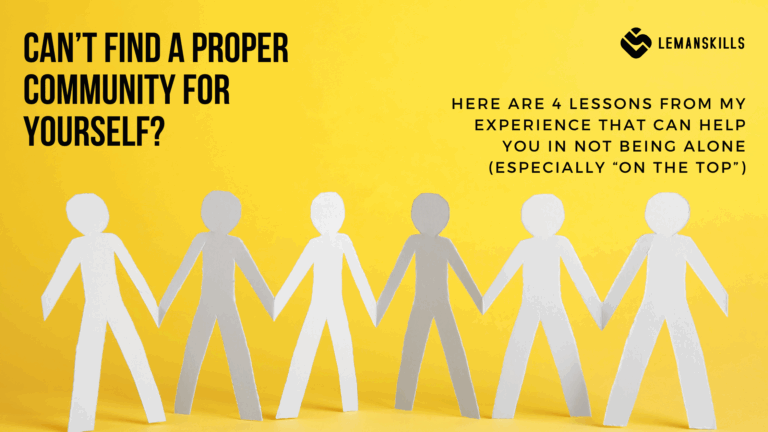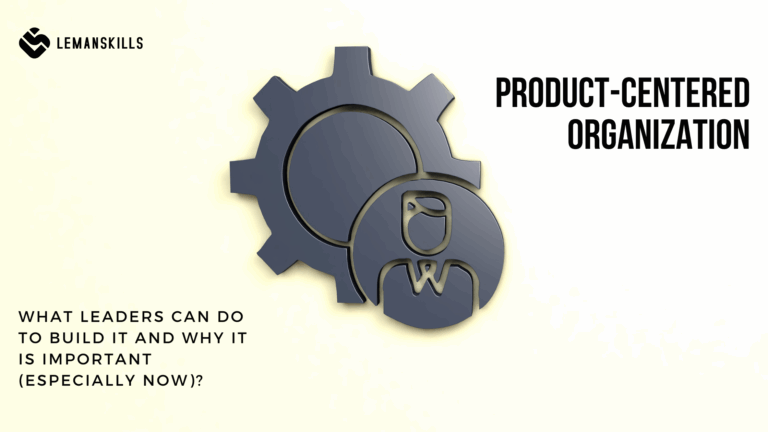People are complex species. And even that we are a part of a certain family, society, country or culture, we are all individuals, having different needs, thoughts and beliefs, based on our unique experiences. And yet, there are several elements that are pretty common and universal and being more aware of them can support us in having high level of motivation, efficiency and health.
Today, I have 4 dots for you to connect to have a better, more balanced life – taking care of those simple elements will calm you and I believe will be helpful, especially while living in a constant change and uncertainty that most of us experience right now.
1. Digital well-being
Technological changes are present in our lives. Those devices, tools or software are here is support us, to automate necessary but time-consuming tasks, to make our life easier and better. And that’s amazing how many things most of us have access to, without even moving a toe from home.
The latest BankMyCell research shows that almost 84% of the world’s population own a smartphone and almost 92% of the world’s population own a mobile phone (you can find more information about the research here: https://www.bankmycell.com/blog/how-many-phones-are-in-the-world). And we use it a lot – 3 hours and 15 minutes in average. Though, it is different from generation to generation, i.e. Millennials are on their phones approximately 5,7 hours per day (more statistics about that here: https://kommandotech.com/statistics/how-much-time-does-the-average-person-spend-on-their-phone/).
It is insane.
Of course, it depends on the person how it’s used (there are many educational apps, i.e. those that support foreign language education are super useful), but let’s be honest – most of us are just scrolling through social media without any bigger goal. And while we think about the excuse ‘I don’t have the time’ for reading, doing sports or spending more time with friends of family, I believe that we can save some time here and invest it somewhere else.
So check on your phone – how many minutes / hours you spend on certain apps (and using phone in overall). First thing is awareness, then it’s action. Make a goal about cutting app time which don’t have any positive impact on your life. If you need, you can use the ‘app limits’ option and set daytime limits for certain category of apps on your phone.
Do it for a week. Then review and make it a month. You will see how much time you actually have and how many things you can do while not scrolling.
2. Financial well-being
To be completely honest with you, financial well-being is for me the hardest of all the areas covered in this article. When we worry about living from paycheck to paycheck, not having an emergency fund in case of anything happen or while we are watching the inflation rate increasing from month to month, like right now, we use a lot of energy on this. We are preoccupied, sometimes can’t sleep while running different scenarios in our heads, pretty often even having long periods of bad mood, which – in many cases, end in depression or other mental disorders.
Remember the Influence Matrix that I described HERE and think about all financially connected elements that you are worried about at the moment. Do you have any influence on them? I would say that we don’t have any influence on the rising inflation, but we do have a lot of influence on our personal home budget.
Use a simple excel spreadsheet to track your monthly costs in different categories. Home food, eating out, alcohol, cosmetics, gas and car expenses, clothes, apartment stuff, paying debts. Use those that are applicable to your individual situation and put every single expense in the file. It needs to be done daily, in a systematic way, but I can assure you that it’ll be a life changer. If definitely change my life and did allow me to pay debts faster and limit unnecessary costs.
You can use a similar template that I use – you can find it below:
3. Mental well-being
Mental health is a complex area. It is not only about being healthy or experiencing mental disorders. From my perspective taking care of mental well-being means to take care of ourselves holistically. Being mindful about our spirit and body, since it is all connected. Listening to our emotions, needs and to what is happening in our heads.
Are you calm or agitated (meaning overstimulated)?
Are you stressed? If yes, why? What kind of symptoms are you feeling in the body?
Which of 4 basic emotions do you feel right now? (happiness, sadness, anger, fear) What makes you feel that way?
What do you need at the moment? Being with people? Silence? Being alone? Having a task list to feel more grounded and have a purpose? Being recognized for your hard work? A new, exciting stimuli? Sleep?
Are those needs covered or frustrated? What can you do to take care of them better – by yourself or with help of other people?
What kind of beliefs do you have about yourself and the world that is around you? Are you in OK-OK position (I am OK AND the others / the world is OK)? (I am going to tell you more about the ‘OK-Not OK Matrix’ in the next article). Are those convictions supportive or quite the opposite? What can you do about it?
If you don’t feel well, it is getting longer and longer and you don’t know what to do, ask for help. It can be a friend. A manager, colleague or HR person at work. It can be a coach, psychologist of therapist. It really depends on what you need at the moment, what kind of resources you have available and what can you afford. Remember that mental health issues are as important as those connected to our bodies and they need to be treated accordingly, so you can be healthy and live your life as best as you can.
4. Physical well-being
There are several elements of our physical health that are basic, repeated in various sources of knowledge and they seem like nothing new or groundbreaking. But if each of us do them, the world would be a beautiful and healthy place. Not the one with an obesity crisis, record numbers of cardiovascular and neurodegenerative diseases – as we see, a lot of people do not take care about this side of well-being.
So take care of your body, since it is the only one you have. And start with taking care of yourself before you take care of others.
Drink water, 8 glasses per day.
Exercise. When writing this article, I do 5-6 different workouts per week (running, swimming, yoga, circuit training, Zumba, stretching, hiking), even if I only have 20 minutes in the morning. Every step counts, if you want to start your exercising routine from replacing the elevator with stairs – that’s a great beginning! You love biking? Do it as frequent as you can – to work, school or shopping. You are happy while walking around the block? Perfect, do that. Choose whatever works for you and keep it fun. Forcing yourself to run while you hate doing that can do more harm than it’s worth it.
Sleep. Go to bed and get up at about the same time every day. There is nothing worse for your body than sleeping off on weekends because you get up early during the working week. That way you perpetuate the belief that Mondays are the worst, and you are waiting the whole week for Friday. Every single week the same scenario. And I would like to encourage you to live your life fully all the time, not only on weekends.
Eat well. Exclude processed food, candy, meat if you can. Eat more vegetables, fruits, good fats and proteins, drink fresh juices. It doesn’t mean that you can’t eat pizza or fries from time to time. Of course you can, just be reasonable and mindful about what you eat and when. Avoid eating a lot 2 hours before going to sleep – it will have a tremendous impact on quality of your sleep.
Rest. If you are a person that is often tired, always in action, take a step back and think about the last time when you were actually resting. Did nothing. We all rest differently – some of us rest actively, some of us hanging out with friends, some of us need total silence to calm down the nervous system. Plan this time if needed.
The bottom line
The bottom line here is that we often think that we know everything. Everything was already said, and I there is nothing new to learn. But I believe the simplest things are, most often the best ones. Make an effort and examine those 4 areas of your well-being. Take a closer look on each of those separately, but also make connections between them. How your sleep quality influences your mood? How your financial struggles influence your sleep quality? It is all linked like a huge network of connected vessels and being aware of that is a great first step to have a better balance.
Stay healthy and boost your fulfillment anytime you can.




